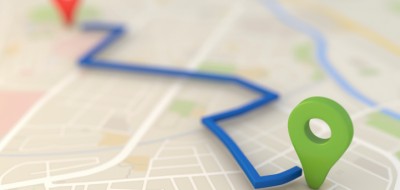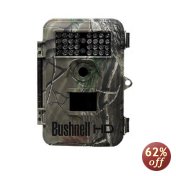 Most of us take photographs of people or scenery, and those are perfectly good uses for your camera, if fact, in my opinion those are the best reasons for taking pictures, however there are other uses for your digital camera. Not everyone will use all of these, but keep them in mind. A digital camera can be used to record all kinds of information:
Most of us take photographs of people or scenery, and those are perfectly good uses for your camera, if fact, in my opinion those are the best reasons for taking pictures, however there are other uses for your digital camera. Not everyone will use all of these, but keep them in mind. A digital camera can be used to record all kinds of information:
- Although most of us know we should take photographs of our “stuff” for insurance purposes, how many have actually done it? Set aside an afternoon to either video tape or photograph everything you might need to file a claim for. If the item has a serial or model number, be sure to check that the resolution of your photograph is high enough to read it. Even better would be to build a database that includes purchase date, cost, etc., and include the photograph. Remember to keep a copy off site so it will still be available if the worst happens.
- Don’t have a scanner (or don’t have room for one)? Most digital cameras are capable of producing high resolution copies of documents. Since you are not limited by the size of a scanner bed, so you can digitize large items. Just be sure to check the result to insure the text is readable. It is also important to position the camera at 90° to your copy – if you don’t, the keystoning the off axis image produces will distort your picture.
- If you have invested a great deal of time “perfecting” arrangements of items on a shelf, bulletin board or other type of display and decide to make a temporary seasonal change, take a photograph of the display before tearing it down so that you can reassemble it afterwards.
- Another “visual reminder” is to photograph your RV storage bins, particularly those that are rarely accessed. If you are wondering where “whatever” is, check the photographs. Much easier than hauling everything out and finding it was in another bin. For deep bins, take photographs of each layer.
- Do you ever forget where you parked the Toad in a mall or amusement park parking lot? A GPS equipped phone or portable GPS is probably the best way to “remember” where you left it, but a quick snapshot of the lot’s sign or some other reference can save a lot of searching.
- When shopping for furniture or other items that the “look” is important, take photographs of any you might consider purchasing. Include a photograph of the store sign at the end of each group so you remember where the items were located. If you can’t both shop together, it is a good way to show your SO the items that peak your interest.
- When stopped at a campground that you are likely to revisit, take photographs of as many sites as possible, particularly the best & worst ones. Include the site sign in the photograph so that you can make an informed choice when reserving for the next visit.
- Although this may seem a bit paranoid, if you are dropping your RV off for repairs, photograph the condition of everything. There have been too many reports of damage, grease ending up on carpets, etc. that the dealer insists was there when you brought it in. Along the same lines, if you are renting a car be sure to photograph any dents, scratches, or other problems that already exist on the rental.
- If you are doing any task that involves taking something apart that you are going to need to reassemble, take photographs of each step. That way if you don’t get a chance to put things back together before you forget how it came apart you still have a record.
- Although not useful for your RV, if you still maintain a stick home & install a new septic system, photograph where the tank, distribution box, and other points of the system that will need access 2-5 years down the road. This will save a lot of digging (Don’t ask me how I know about this one!) This is also useful for any other underground utilities. Along the same lines, if for any reason your remove the walls, roof, etc. of your house or RV, take photographs that will show the locations of any exposed plumbing, wiring, studs/rafters, etc. If weather conditions outline the studs or rafters of your RV, take a photograph so you will know where they are in warmer weather. This can be very useful when something goes wrong in the future or you need to add solar panels or other things that need to attach to your RV’s framework.
There are many other uses for your digital camera; these are a few I have discovered. Feel free to add more!



Pingback: Play Flash Games
Pingback: Cheap Car Insurance In Georgia
Pingback: Cheap Auto Insurance In Florida
Pingback: Cheap Auto Insurance In Florida
Pingback: http://www.indystar.com/apps/pbcs.dll/section?category=PluckPersona&U=71a7de5a2029434db0de139a6e411834&plckPersonaPage=BlogViewPost&plckUserId=71a7de5a2029434db0de139a6e411834&plckPostId=Blog71a7de5a2029434db0de139a6e411834Post6a99a1
Pingback: buy twitter followers cheap
Pingback: over at this website
Pingback: tounsia tv
Pingback: templatemonster discount
Pingback: Read More Here
Pingback: Faye Bass
Pingback: see
Pingback: Tony Byrd
Pingback: see
Pingback: trade copy
Pingback: free burgers
Pingback: Tweak PC
Pingback: Black Book Lotto
Pingback: Swtor
Pingback: Public Car Auctions
Pingback: Nurse Training
Pingback: Lainaa 18-vuotiaalle
DEJESUSKelly22
If you want to buy a car, you will have to get the loan. Furthermore, my father always takes a college loan, which seems to be the most fast.
Pingback: lea bedroom furniture
Paul Purcell
A related article to read is “50 Emergency Uses for Your Camera Phone.” We use this type of material when we teach family preparedness to first responders, CERT chapters, etc.
The article covers things like using your phone’s camera for last-minute child-ID, property inventory, transmitting the location of a rendezvous point, and so on.
The article can be accessed (and shared) from our “News and Articles” page at http://www.disasterprep101.com/news.htm
Barb O
When you are in a fender bender, take pictures of all vehicles involved before the vehicles are moved (this helps the insurance company determine who was at fault). After the vehicles are moved to the side of the road, take close up pictures of all damaged areas of all vehicles (these will help the insurance company and you will have a good idea exactly how much damage was done to your vehicle in case there are any repair disputes later). Then email these pictures to your insurance’s claim department. If the accident is more serious and you can not do this yourself try to get someone else in your vehicle or a witness to do it for you.
We had the side of our 5th wheel trailer come loose. We had a hard time convincing the manufacturer to pay for the repairs but we had pictures and we won.
rvguy43
Whenever I leave my car at a parking lot and take a van shuttle to the airport, or cruise terminal, I always take a picture of the van shuttle so I can remember who to catch upon my return.
m dutt
Great info…newbie thanks.
Pingback: Consumer Report Digital Camera
Fritz McDowell
I would think a digital camera would be used when getting service work or warranted work done at a shop, espically if you’re turning in parts to repair or replace. Pictures of your rig or trailer would be good, when you take them at the time you give it to a shop. Show there is no damage with a date and time stamp, have the service writer put their initials on the photos to verify no damage or just have him/her stand in the photos.
Curt
Here’s another “very good use”: I was needing a part for the RV and didn’t want to carry the old part with me. I took a picture of it and with Picassa 3. And I am able to put “text” any where on the picture. So, I put the measurements right on the picture and take it instead.
Mark & Kay Ulm
I do clock repair . Ever movement is a little different—-I take pictures as I am taking it apart. Many times it comes in handy.
Works for anything you disassemble.
Good Day
Ann Krummel
For the life of me I can’r remember my license plate number, so I took a picture of it, developed it wallet size and always carry it with me.
Tom Hargreaves
Great ideas Jon and Froggi, lemme throw some more at this (mostly just extensions of your ideas): I took pictures of all the placards and data plates on the van (TV), trailer, and installed equipment such as the ‘Frig, air conditioner, stove, microwave. I also took photos of the converter/distribution panel, trailer light and TV umbilical fuse panel (which is UNDER the trailer behind a screw-on panel), and various critical electrical, water, and sewer wire and pipe routing points, and almost the whole underside of the trailer. I do a lot of my own work on the trailer, and with the photos, I have the data immediately available without going out to the trailer or crawling under when I need to refer to something for parts, updates, recalls, or planning “improvements.” I also have at my fingertips (mousetip, actually, since the pictures are all loaded into my laptop and desktop confusers) all the ratings, tire sizes, fuse sizes, limits and whatever I might need. I really love the versatility of these digital doohickies!
Happy trails,
Tom
John Shelton
All wonderful ideas here. Some of these here I have thought of before, but just thought of as a passing thought and never acted on. Thanks for the refresher on those and the fresh ideas on the others. I often write the row number on my hand when parking in a large parking lot, but a quick photo with a camera phone would supplement sometimes. Just snap the shot for reference when you arrive and delete it when you have safely returned to your car or RV.
Wayne Bowen
Creative, practical ideas….thanks.
Jon Vermilye
Good idea!
Froggi Donna
Another idea is to take photos (or scan them) of all your memberships cards (both sides), drivers license, voters registration, credit cards, etc. We then saved them onto a thumb drive (one for each of us) and store them in our fireproof safe. For obvious reasons we don’t store any of the critical ones on the our hard drives.
Since we have iPhones we also store the membership cards on them…handy to have when checking into campgrounds and you want to quickly find your membership card.